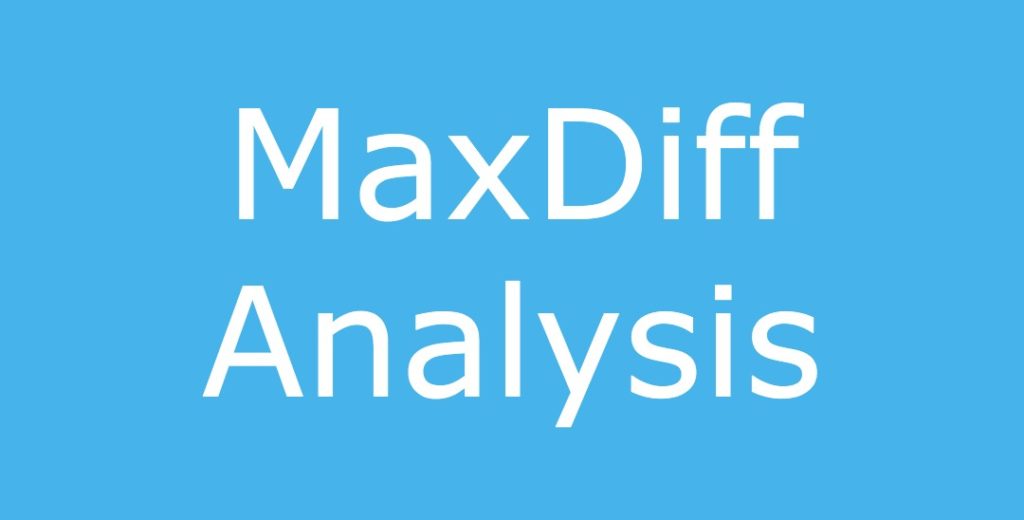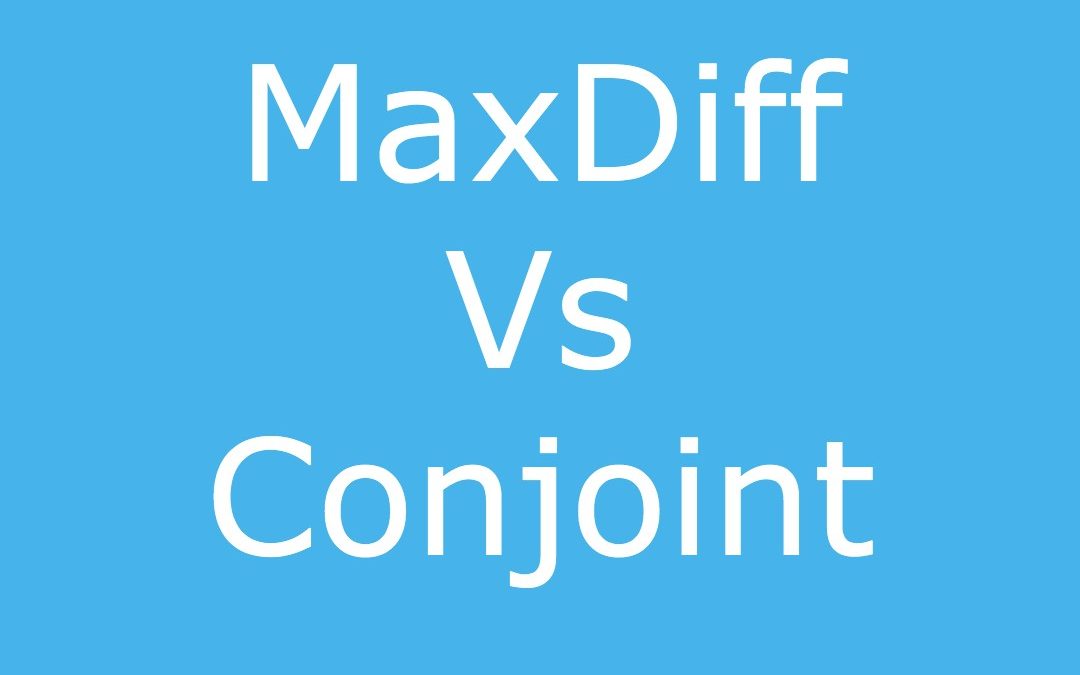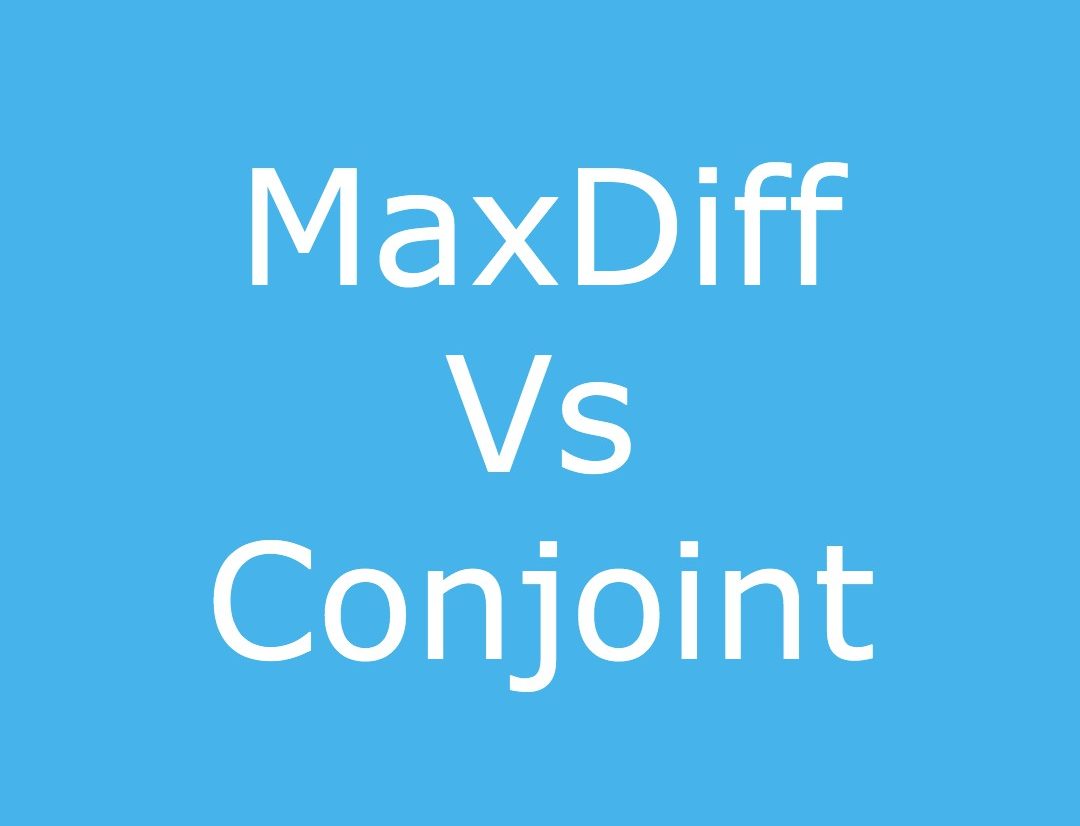Market research is done in many ways of which two are MaxDiff and conjoint analysis. Doing market research can be a difficult task because:
- The market is not static. It keeps changing with a variety of factors like the introduction of new businesses, quitting of businesses, new and enhanced products, and changing economic conditions.
- Understanding customer thoughts can be very tough. No one can perfectly define customer sequence of behavior as it is not possible to get inside their minds.
- It is also not possible to control external factors that may affect any part of the research.
A market comprises uncountable factors that can affect sales. Market researches aim to find out those factors and also steps that can help to improve marketability and product influence. There are many types of research methodologies to get a better understanding of the market and consumers.
MaxDiff and Conjoint analysis are mathematical methods of analyzing responses and the combination of choices. You can find out which brands and products the customer prefers and also the degree of it. You can also get to know what features of a product affect the customers the most. Both these type of analysis helps in conducting market research surveys and questionnaires. Create your own survey and try these analysis methods yourself.

What is Maxidiff Analysis?
Maximum difference or MaxDiff analysis is the analysis of the options that the respondent responses in the form of best and worst or most and least. It is also a lot similar to the best-worst scaling. The researcher can also statistically analyze the data.
To conduct this type of analysis, survey questions should be such that the respondents can select an option which they prefer most or find most relevant to the topic and another which they least prefer or find least relevant to the topic. So, the other options come in between them and are comparable to each other.
For example, soaps of different brands are mentioned and the question is to select which brand the customer is most likely to use and which brand he is least likely to use. Suppose the options are A, B, C, D, E. The customer chooses A as the best and E as the worst.
From this, we can infer that A better than E, A better than B, C, D as well. Likewise, B, C, D are better than E. The relationship that cannot be found out is which one is better than the other among B, C, D. So, in 5 choices, 7 comparisons can be found out among 10 possible comparisons.
Fynzo Survey: Unlimited surveys, unlimited responses, 99% of the features are forever free.
Create a free survey with the easiest online survey creator.
Advantages of MaxDiff analysis :
- It lets the respondents choose only two options rather than grading every option.
- The researcher can include many options in questionnaires than other analysis methods.
- You will be able to get an idea as to which option most of the respondents like the best and the worst.
- It is a great way to conduct market research by evaluating preferences.
Disadvantages of MaxDiff analysis :
- A lot of options become boring for the respondents.
- Sometimes it becomes difficult to choose the best if two of the options are almost equally favorable.
- There is no way to find out if the respondent likes or dislikes both the options equally.
- You can find out the best and the worst options but you will not be able to understand if all the options are good or bad.
Use of MaxDiff analysis in research :
- Helps to build a perfect product that customers would like the best.
- Understand brand preference.
- To evaluate customer satisfaction.
- For product messaging and information on the product.
- One can also use it for risk analysis and management.
- In operational activities.
- To evaluate new product launches.

What is Conjoint Analysis?
Conjoint analysis is a type of data analysis where the responses regarding which features of a product affect the customers the most be for evaluation. You can evaluate multiple factors. There are various aspects to a product or service. Conjoint analysis analyzes the attributes, features, and brands that affect the customers. It is a way of survey analysis.
The questions are in such a way that respondents can select brands and features in each that they like most. From these responses the researcher can configure what aspects affect the customer most, what are the similarities behind each choice, and what reason drives the customer to choose the option. It is quite an effective method of conducting market research. The value of the product is understandable.
For example, there are functions of each product, suppose a television set of three brands like price, size, picture quality, sound quality, and extra features. The value of the product is put for judgment and evaluation by the respondent and he selects the brand which he favors the most. A series of such types of questions. Through the answers, the researcher will be able to understand which product feature affects him the most to make a purchase.
Procedure of Conjoint Analysis
- Determination of the type of questions that you want to give like choice-based or rating based.
- List out all the attributes that you want to research and incorporate. The attributes should be relevant to the research and should be ones that actually enable people to make purchase decisions.
- You also need to value the attributes out.
- Lastly, the survey or questionnaire can be built with these points.
Advantages of Conjoint Analysis
- Market value of a brand is easily understandable in a Conjoint analysis.
- It portrays almost perfectly how a customer would pick his product while actually buying it.
- The respondent can also opt for none of the options.
- In the multiple-choice based questionnaire, the value of each attribute is determinable.
- It also helps to avoid not interested responses.
Use of Conjoint Analysis in Research
- Test out the value of a new emerging product.
- To understand how it would affect the customers if there are any changes to the product
- You also use it to put a price on the product depending on how it may serve the customer’s needs.
- It can facilitate product deletion if the product is most unlikely to be chosen among other products.
- It can also be used to develop a new product that perfectly fits the customer’s choices.
Disadvantages of Conjoint Analysis
- Sometimes all the features of a product are not present which leads to incorrect or not-so-useful data collection. This is because a customer might choose products on the basis of some attribute that has not been mentioned.
- Customers might not put equal effort into filling out the survey than in making purchase decisions in reality. So, the value of the product attributes can not be known in the true sense.
- It is a complex way of data analysis.
- If numerous attributes are there for choice, the analysis also becomes difficult.
- Data interpretation and understanding of customer psychology can be tricky work to carry on with.

MaxDiff Vs Conjoint
MaxDiff and Conjoint are not all same and not all different. let us find out the similarities and the differences.
Similarities Between MaxDiff and Conjoint Analysis
MaxDiff and conjoint analysis are completely different types of market research methods but have a few similarities.
- Both can be conducted with survey method.
- MaxDiff and conjoint analysis both can be statistically represented in certain parts.
- Both methods help to clearly differentiate between brands, features, attributes, and many more points.
Difference Between MaxDiff and Conjoint Analysis
MaxDiff and Conjoint analysis can be differentiated in many ways.
- Maxidiff analysis aims to look at the choices among a list of brands, features, and looks. Conjoint analysis aims to measure the value of the product and its attributes.
- Conjoint analysis is a study with more details and precision.
- Maxdiff simply lists the products or features. Conjoint breaks up the attributes and building factors of the product.
- The value of the product is decipherable from Maxdiff analysis. The value of the separate features of the product is decipherable from Conjoint analysis.
The Bottom Line…
MaxDiff and Conjoint analysis both are effective methods of doing market research surveys. Both show satisfactory results and serve the researcher well. The researcher gets to know a lot about how the customer thinks and what factors drive him to make a purchase. He also gains knowledge on the competitors and what improvements or additional enhancements a product or service can need to serve better. There are many other methods of conducting market research as well. But Maxdiff and conjoint analysis methods show statistical data as well as qualitative data. So, both of them are very reliable.
Fynzo Survey: Unlimited surveys, unlimited responses, 99% of the features are forever free.
Create a free survey with the easiest online survey creator.




